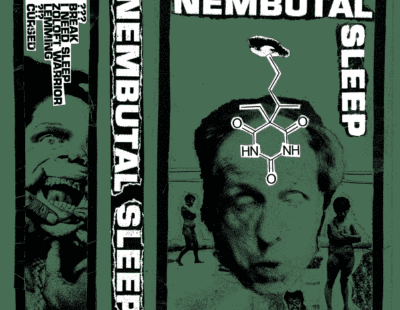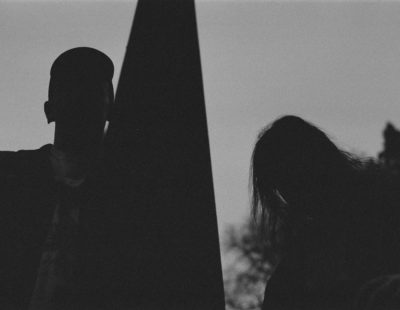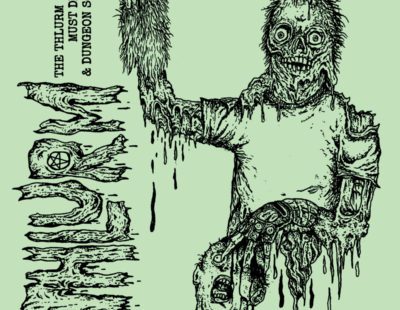
 This week’s Demo:listen reveals 埋葬, the debut album from San Jose’s one-man death metal band, Ripped To Shreds.
This week’s Demo:listen reveals 埋葬, the debut album from San Jose’s one-man death metal band, Ripped To Shreds.
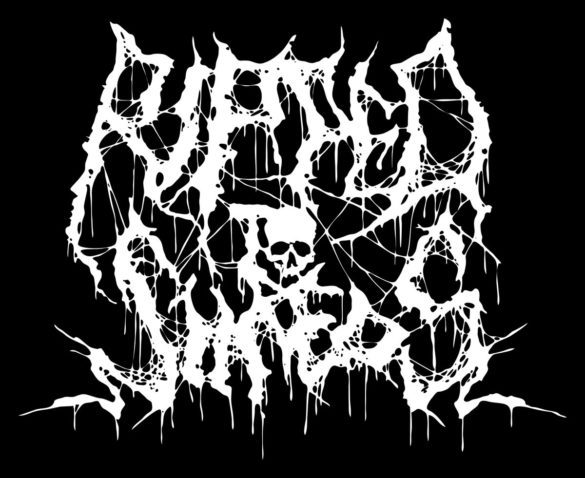
One year ago—almost to the day—, we featured a young and eccentric death metal band out of San Jose named Disincarnation. Sadly, that trio have since parted ways, but Disincarnation’s former vocalist/guitarist/bassist, Andrew Lee stayed in touch. Although he never let on that he was working on something by himself until recently, when he casually sent a link for a private Soundcloud stream of 埋葬, the debut album from his solo death metal attack Ripped To Shreds.
What does every near-victim in every horror movie ask the moment they’re temporarily safe from the hunting monsters? After “Craven Blood,” the first track, we asked the same question: “What the f—- was that?”
“From day one, my aim was to create crushing OSDM worship, drawing on inspiration from bands like Entombed, Bolt Thrower, and Asphyx,” Andrew says. “AK and Ramon [of Disincarnation] are both great guys and musicians, but the fruit of our collaboration after the demo started moving in a direction that I wasn’t a fan of. I only have so much energy and focus and I wanted to bring it all to bear on a vision that I could stand behind 100%, so I quit Disincarnation.”
But how did Andrew seemingly advance so many levels in his skills of riff and songwriting, soloing—who knew he even played the drums?
“I’m not sure if it’s mainly growing as a musician or simply having greater perspective of the end product,” Andrew says. “I enjoy working at a slower pace. With [Disincarnation] I felt pressured to write as fast as I could and there was resistance to going back and changing sections once the song was ‘finished.’ When I was still in the band, I wrote “Craven Blood” in just a week and a half. During the recording of 埋葬 I completely changed the main verse riff and the new version is one of my favorite riffs on the whole album now. The rest of the songs all existed in some raw primordial form for many months and I could digest and tweak every song at my own pace. I’m not a person who can easily make snap decisions, so by looking back at a riff or section months later I was able to better judge them.
“I took an intro to drumming course in college when I had some free units back in 2012, but I didn’t buy my own kit until 2014. I kept it in my parents’ basement since there was no way I could get away with playing an acoustic kit in an apartment. I’m not as consistent about practicing drums as I should be, so there’s still a fair amount of studio magic that went into the drumming on the album. It’s a very different feeling from shredding on guitar; I’m definitely not as ‘free’ and I don’t have the same range of expression since there’s a pretty huge skill disparity. But there’s so much energy in a huge d-beat or skank beat and I love how the entire feel of a riff changes by playing different beats or even emphasizing different accents with crashes, so drumming is definitely something I’m looking to improve on future releases.”
As for the name Ripped To Shreds . . .
Andrew says: “I wanted a name that embodied the sonic violence of the music. I’m also a huge fan of Horrendous and Terrorizer so I wanted to pay tribute to both bands by using one of their songs as the band name; Horrendous for bringing me back to extreme metal and Terrorizer for fostering my love of grindcore. Also, Carnage/Dismember have a song called Torn Apart and that pretty much means the same thing as ripped to shreds, right?”
He goes on to explain the meaning behind the title of Ripped To Shreds’ debut.
“埋葬, pronounced mai-zang, means burial. The first character 埋 is ‘bury,’ which is used in general for anything. 葬 also means ‘bury’ but specifically for the dead. Chinese has a lot of doubling of characters for emphasis. On one hand it’s a reference to Entombed, whose influence is obviously all over this album, and on the other hand, it refers to how Asian-Americans are ‘buried’ and invisible in the nation’s discourse, which I felt was relevant as the album is a pure reflection of myself.”
All eight songs on 埋葬 (mai-zang) reflect on and draw inspiration from Andrew’s Han Chinese heritage.
Andrew says: “I saw a niche that wasn’t being filled. There are so many sick war-themed bands like Bolt Thrower, Trenchgrinder, or Sacriphyx, but they keep retreading the same territory. We’ve had 30 years of World Wars and total extinction of humanity. I have difficulty emotionally connecting to fantasy situations, so historical lyrics allow me to perform in a more natural way, and Chinese history is uncharted territory for death metal. I figured Chthonic already has the Taiwanese stuff on lockdown, so I didn’t want to step on their toes. Also, I live in the Bay Area which is 25% Asian, but somehow at shows in Oakland or SF or San Jose, I’m usually the only yellow guy there. I remember at CDF 2017, I met a guy from Cupertino who was so excited because he’d never seen another Chinese dude at a show. There are a lot of Filipinos into metal around here and they’ve had some big bands like Death Angel or Metallica, but the only East Asians I can even think of are Jon Chang, Dave Suzuki, and Cole from Spinebreaker. As such, I wanted to increase the visibility of ABCs in extreme metal by being very blatantly Chinese.”
埋葬 (mai-zang) boasts a massive, yet immediately menacing production. Not so much a wall of a sound as a sustained blast of hot winds, debris, and various clobbering bones.
Andrew explains the arduous and slow recording process for 埋葬 :
“I recorded everything by myself in my parents’ basement and Damian Herring of Horrendous reamped the rhythm tracks, mixed, and mastered the album. Tracking drums was a really long and arduous process that spanned 2 months. I had around 3 hours on weekdays to work with: leave for work at 730, get back at 7, eat dinner, record shit. A lot of short takes, listening back to assess the take, redoing takes, and the finally comping all the takes together. Some bad mistakes were made, like when I knocked the snare drum over and couldn’t get the same mic position and sound again, or the tom tuning fluctuating from song to song as the weather got colder and colder. The snare we ended up replacing with a sample as it sounded pretty atrocious anyways. In comparison to drums, tracking everything else was easy as pie. I recorded direct into my AxeFX2 for guitars and bass, and used my own Marshall patch for solos. Vocals I just held a Shure SM7 in front of my mouth and vomited on it, I didn’t have an iso booth or anything. All of that took about 6 days from start to finish. I think the toughest part of tracking the rest of the instruments was judging whether or not I did a good take, because when you’ve played the same section 10 times in a row you want to just smash your computer with a baseball bat.”
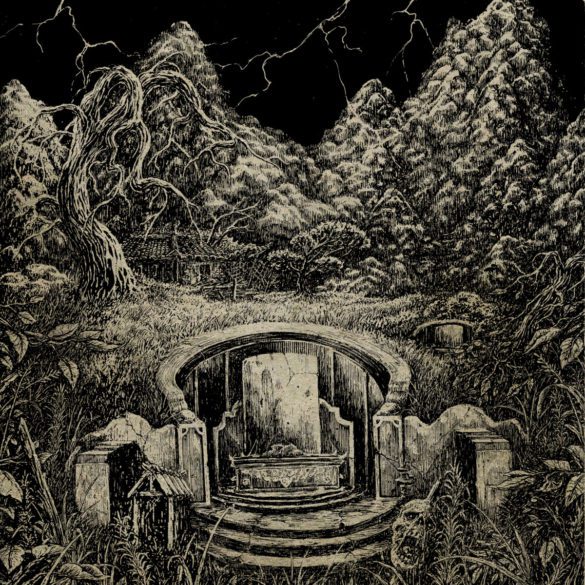
Icelandic skullsman Skadvaldur executed the artwork for 埋葬 (mai-zang). Demonstrating his versatility, Skadvaldur trades gore for subtlety, and reveals an unknown depth to his talents.
Andrew explains: “I wanted an image of extreme desolation and obscurity to represent the psychic and physical pain of the victims of the atrocities and horrors the songs describe. The art depicts a traditional Han Chinese grave surrounded by a forbidding mountain range. On the first day of the fifth month of the Chinese calendar, there is the Qingming Festival, or ‘Tomb Sweeping Day,’ where families visit their ancestors graves to clean them and honor them with libations and other offerings. So for the grave to be as dirty and unkempt as drawn is to dishonor the ancestors. I wish there was some kind of deep symbolism for the grave marker being blank but I simply couldn’t think of anything pithy to say there.”

Andrew highlights and provides some insight into several tracks on the album.
“As a kid whenever I visited family in Taiwan, I’d end up in front of the TV watching old Hong Kong horror movie reruns on channel TVB, and they’d often feature “jiangshi” which are hopping zombies/vampires. Their limbs are so stiff in death they can only move around by hopping and they hunger for the living breath, or qi, of humans. They’re blind, so they rely on smelling qi to find their victims. They’re typically reanimated by a Taoist priest and can be controlled with ringing of a special bell to lead them around. Jiangshi can also be rendered motionless by applying magic yellow talismans to their face: ‘Talisman to Seal the Hopping Corpse Before It Steals your Qi.’ Once they grab a hold of you, they’ll suck out your life force until you’re a shriveled husk, so if you ever encounter a hopping zombie with long red claws and greenish skin you’d better hope you can hold your breath long enough to hide from its voracious grasp.
“撿骨 (Bone Ritual) was inspired by attending the Buddhist funeral of my grandfather. There’s a long process of reading Buddhist scripture over the corpse to tell the soul of the deceased that it’s okay to travel towards to heaven and to not stay attached to the human world. During this period you’re also supposed to eat vegetarian, so if you’re in China or Taiwan and you’re on a street that’s got a lot of vegetarian restaurants, you might be near a funeral home. Then there’s the proper funeral ceremony, after which the corpse is cremated. Cremation still leaves many pieces of bone behind, so those are picked up by the sons and grandsons with long handled chopsticks and placed inside a funerary urn, with all the feet parts first and the skull fragments last at the top. This process is called 撿骨 (jiangu), which literally means “picking up the bones.” I often hear stories about incompetence on the part of the funeral homes and I wondered, what would happen if the family were given the wrong person’s ashes and bones? The strangers’ funeral urn would be buried at the family plot and worshiped for good luck, so the true deceased would be unable to help his family from the afterlife. Bone Ritual lyrically and musically follows this scenario: a violent accident, a funeral, cremation, and the impotence of the deceased as he despairs from beyond the mortal veil.”
How about the grisly decapitator that is “Red Annihilation?”
“‘Red Annihilation’ loosely covers the KMT’s purge of the Communists in the Shanghai Massacre of 1927. It was one of the precipitating events of the Chinese Civil War, which was a long grinding affair that dragged over 23 years. I wanted to musically represent this with slow crushing grooves. The solos are me being a huge Racer X and Paul Gilbert fan, and it felt like a natural transition into the frantic skank/d-beat section. The grinding violence at the tail end of the song is the opposition of the US and her allies as they attempt to contain the spread of Communism backed by China in Southeast Asia.”
There’s no denying Ripped To Shreds’ influences, and yet, when it comes to thematic content, Ripped To Shreds are peerless.
Elaborating on his various influences, Andrew says: “For war themed DM, Bolt Thrower reigns supreme. I’m going to pick two: …For Victory for its absolutely pummeling riffs as well Realm of Chaos for its perfect mix of fat chunky riffs sandwiched between grinding blastbeats. Trenchrot’s Necronomic Warfare is a blistering modern record with on-point Martin Van Drunen vocals, shreddy Jason Becker solos, and Riff Thrower grooves. And of course, MVD himself with Asphyx’s Last One on Earth and Hail of Bullets’ …of Frost and War. Classic deathy death/doom and faster Asphyx with a Boss HM-2? Yes please.
“As far as I know the Chinese and Taiwanese scene haven’t produced much death metal,” Andrew says. “There’s Ululate’s Return to Cannibal World which has jiangshi depicted on its cover art, and Rupture’s Rise from The Mass Graves which is about war in China. Mainland China seems to mostly produce black metal which I’m not very knowledgeable about, but I think Taiwan’s Chthonic (folk/black) as well as Singapore’s Tantra (black) have albums about traditional burial rites.”
By now you’ve noticed the clamorous cameo of BW, of Draghkar and Grave Spirit, who provides guest growls on the track, “Open Grave.” Apparently these two Californian death metallers go way back.
“Yeah, I’m definitely inspired by BW’s successes and growth,” Andrew says. “Every single new project or song he works on, from Grave Spirit to Skullsmasher to the new Draghkar split and EP, showcases his versatility and deep knowledge, and with each new song he writes his riffs and structures get tighter and catchier. We share a lot of our rough music sketches with each other and I highly value any feedback he gives me because he’s got a great ear. We’re actually working on an epic metal project together in the vein of Manilla Road or Cirith Ungol, along with some other members of Demo:listen alumni bands. As for having BW sing on ‘Open Grave,’ I wrote some cavernous riffs that needed equally huge lows and my voice wasn’t right for it, so it was only natural that I asked him to help me out there.”
As for the details on the physical manifestation of 埋葬, Andrew informs us that:
“Craneo Negro from Mexico is doing a run of 500 CDs and Necrolatry from Malaysia is doing 200 tapes. Derek from Begrime Exemious handled the layout work and I couldn’t be happier with the design he made. If you’re outside of the US, I really recommend buying from them cause they’ll be able to give you sane shipping rates.”
“I’m writing some new material that will make it into either an EP or split, or perhaps both, or maybe even mothballed if I don’t think it’s good enough,” Andrew says regarding what’s next for Ripped To Shreds. “I don’t want to jump into writing a second album right away. I think it’s necessary to try and grow some more as a musician before I attempt a follow up, and I also need to figure out how to better integrate my grind tendencies with the DM; I have this 50 second song I want to use somewhere but a friend commented that it sounded more like straight grind rather than deathgrind. Thanks to anyone who made it all the way down here, thanks to all those crazy cats who preordered the digital and any and all of my supporters, and of course Alejandro, Nicholas, and Weng from Craneo Negro and Necrolatry!”
For more news of Ripped to Shreds and 埋葬, visit:
https://rippedtoshredsdeathmetal.bandcamp.com
https://twitter.com/rippedtoshreds4
https://www.instagram.com/rippedtoshredsdeathmetal/
facebook.com/rippedtoshredsband
facebook.com/ixcraneonegroxi/
facebook.com/NecrolatryRecords/




